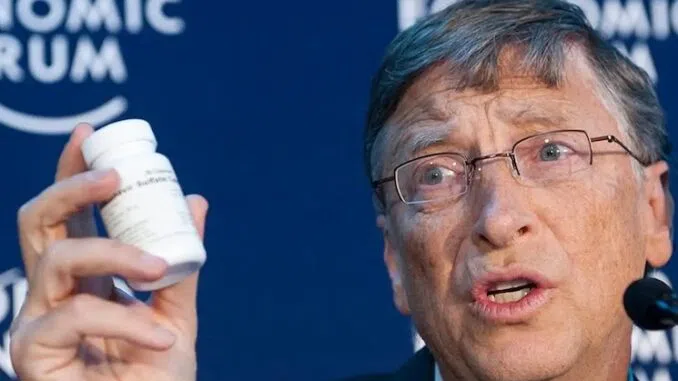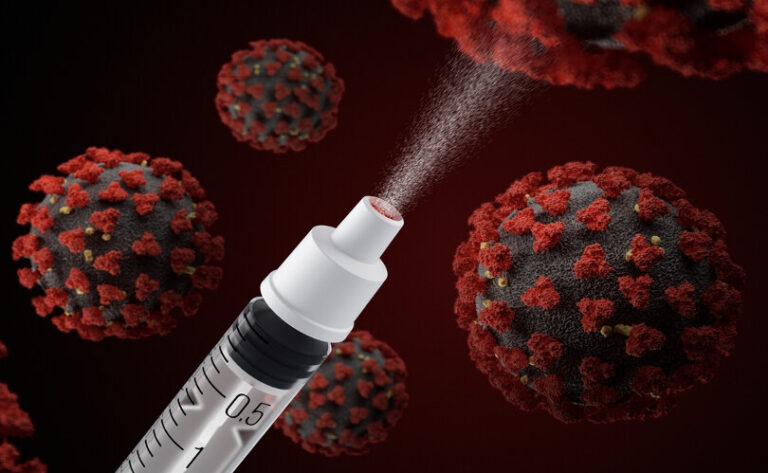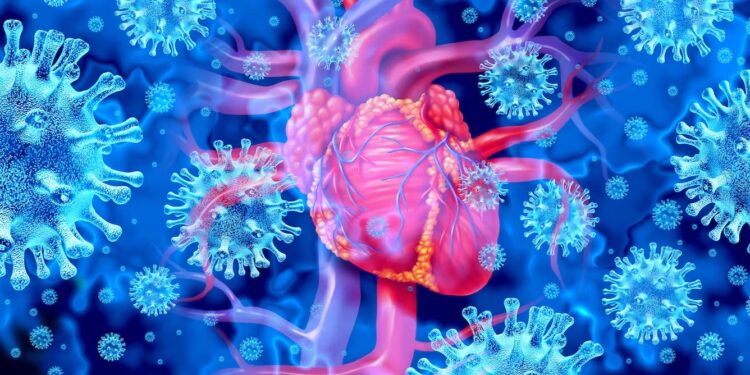Myocarditis and COVID-19 Vaccines: How the CDC Missed a Safety Signal and Hid a Warning

COVID-19 vaccines cause heart inflammation, according to US authorities. An Epoch Times investigation discovered that after being warned in early 2021 about a “large number” of cases among healthy, young people in Israel following COVID-19 vaccination, authorities did not immediately alert the public while also failing to detect a safety signal that was present in the United States.
Even after deaths from myocarditis (heart inflammation) were reported and myocarditis was designated as a likely side effect of the shots, US officials continued to recommend vaccination for nearly the entire population.
As a result, millions of young people received a vaccine.
Many of those people were harmed.
Aiden Ekanayake, 14 years old, was one of them. He received the Pfizer-BioNTech vaccine in May 2021, followed by a second dose in June 2021.
Aiden was awakened in the middle of the night two days after the second dose with pain comparable to when he tore his anterior cruciate ligament. Emily, his mother, rushed him to the hospital, where he was treated for several days. Even after he was released, he was restricted from exercising for more than four months.
Ms. Ekanayake had previously trusted the Centers for Disease Control and Prevention (CDC) in the United States. She no longer does.
“I despise them. Ms. Ekanayake told The Epoch Times, “I think they’re evil.”
No Transparency
According to documents obtained by The Epoch Times, Israel warned the CDC, America’s public health agency, on February 28, 2021, about a “large number” of myocarditis cases following Pfizer COVID-19 vaccination.
Internally, the warning was designated as “high” priority, triggering a review of US data. According to a U.S. government memorandum dated March 9, 2021, the review discovered 27 reported cases in the United States. The incidence rate was low, but “missing and incomplete data make assessing causation difficult,” according to the memo. It stated that the US Food and Drug Administration (FDA) “has not made a final determination regarding the causality.”
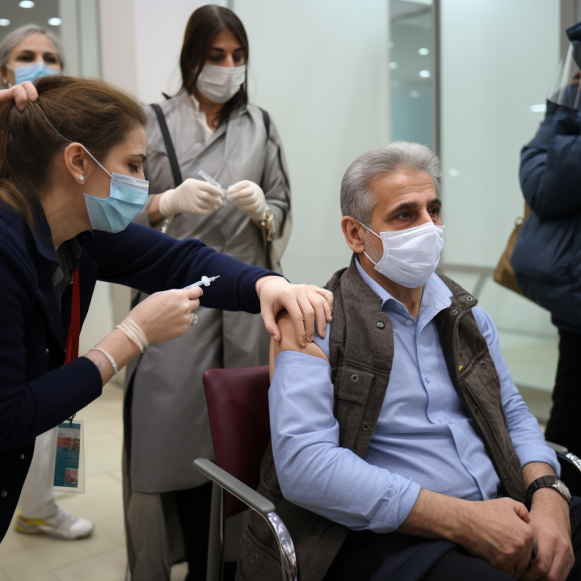
Despite the death of a previously healthy 22-year-old Israeli woman and briefings from Israeli officials and US Department of Defense (DOD) researchers, neither the CDC nor the FDA had issued an alert to the public.
The DOD, like Israel, was reporting a higher-than-expected number of myocarditis cases. The majority of the patients were young, healthy men.
In April 2021, the CDC met with military officials twice behind closed doors. During at least one of the meetings, military officials presented data to the CDC. That presentation, which was never made public, “included our preliminary patient data and analysis that suggested to us that myocarditis was indeed a possible side effect to the messenger RNA COVID-19 vaccines (within the US military),” one of the presenters, Dr. Jay Montgomery, told The Epoch Times via email.
Messenger RNA (mRNA) is used in the Pfizer and Moderna vaccines.
Following the meetings, then-CDC Director Dr. Rochelle Walensky finally addressed the issue in public on April 27, 2021, during a White House briefing.
According to Dr. Walensky, “we have not seen any reports” of myocarditis following vaccination. According to CDC data, by the end of March 2021, the agency had received 141 reports of myocarditis in the Vaccine Adverse Event Reporting System (VAERS). Another 24 cases were recorded in the Vaccine Safety Datalink, the CDC’s second system.
Furthermore, internal emails obtained by The Epoch Times show that Dr. Walensky was copied on multiple threads discussing myocarditis and a related condition, pericarditis, including one about doctors in California seeing the cases. She commented on one of the threads, saying the information was “super helpful.”
“We have not seen a [safety] signal,” Dr. Walensky added during the briefing, “and we have intentionally looked for the signal in the over 200 million doses we’ve given.”

Found a signal
In late 2020, the FDA approved the Moderna and Pfizer vaccines.
The CDC and FDA are tasked with monitoring data from VAERS, which officials describe as the country’s “early warning system” for potential vaccine problems. According to archived VAERS data from the National Vaccine Information Center, they failed to detect a safety signal for myocarditis after COVID-19 vaccination that triggered on Feb. 18, 2021, when using a statistical analysis method called Proportional Reporting Ratio (PRR).
The CDC initially stated that PRRs would begin in February 2021, but later admitted that this was incorrect. The agency now claims that PRRs will not begin until 2022. According to documents obtained by The Epoch Times, the first time the CDC ran complete PRRs, officials detected a signal for myocarditis.
“It’s unimaginable that they wouldn’t have seen the signal,” said Brian Hooker, senior director of science and research at Children’s Health Defense, who discovered an early signal for myocarditis in VAERS using a different method. “The Department of Defense notified them. The Israeli Ministry of Health notified them. So, even if they didn’t know at the time, they have no excuse because they were warned.”
The emails between Israel and the CDC were obtained first by Children’s Health Defense, a non-profit whose mission it is to end childhood health epidemics.
Dr. Walensky, who has since left the CDC, has yet to respond to a request for comment on her myocarditis allegations.
“CDC has been continuously monitoring the safety of COVID-19 vaccines since they began to be administered in the United States,” a CDC spokesperson told The Epoch Times via email. At the time of the director’s press conference, the CDC did not have enough evidence to conclude that mRNA COVID-19 vaccination caused myocarditis.”
The CDC stated that it did not conduct PRRs in 2021 because officials relied on a different analytic method known as Empirical Bayesian data mining. It’s unclear when the FDA’s method first detected a signal for myocarditis. The FDA has declined to comment on the matter. The CDC told The Epoch Times that its detection of a myocarditis signal using PRRs in 2022 was “consistent with” the data mining results.
VAERS data is processed by contractors for both the CDC and the FDA.
“Even the FDA doesn’t really know the mechanics of how its contractor does data mining,” a CDC official said in an email obtained by The Epoch Times. Requests for comment on the email were not responded to by the official or the FDA.
A safety signal indicates that a vaccine may have caused an adverse event. Authorities claim that signals can only be confirmed with more research.
“Once the safety signal appears, why not begin warning the public that ‘hey, you can take it if you want, but understand that there is this risk that we have discovered and we are looking into it?” said Dr. Anish Koka, an American cardiologist, to The Epoch Times.
One possible reason for not thoroughly investigating the issue was that it could have resulted in a halt in vaccination. Following a small number of blood clotting cases, the CDC and FDA effectively halted Johnson & Johnson’s shot on April 13, 2021.
“A pause in the Pfizer/Moderna administration (much like the J&J blood clot pause) will have an adverse impact on US/CA vaccination rates,” one military official said in a message obtained by The Epoch Times and directed to top CDC officials.
The percentage of the US population who received a COVID-19 vaccine increased from 14.2 percent to 50.5 percent between February 2021 and May 2021.
“It was most likely a strategic move in order to make sure that they didn’t curtail vaccination rates,” said Mr. Hooker.
Backlog
A day after Dr. Walensky’s unequivocal statement, CDC officials privately acknowledged the difficulty in processing VAERS reports due to the large number of them.
“Due to the large number of reports that we are receiving at this time, processing is taking longer than usual,” a spokesperson said. The message was sent to a woman who stated that she had filed a VAERS report for her son’s myocarditis on April 21 but that it had not yet appeared in the system days later.
A CDC official, Elaine Miller, wrote around the same time that there were “processing delays” for VAERS reports.
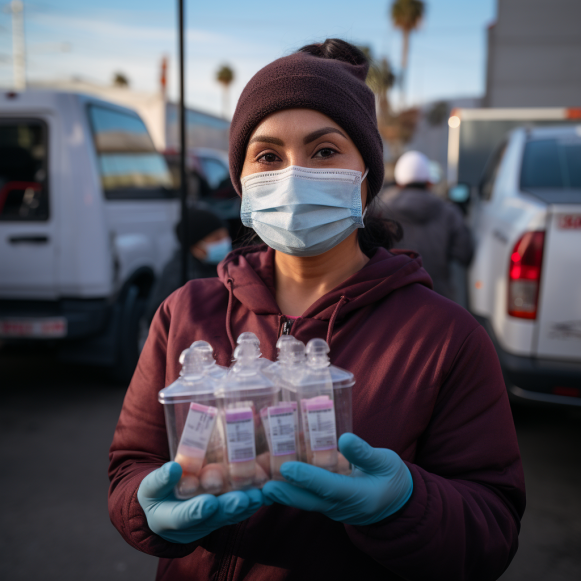
Before the vaccines were distributed, one of the CDC’s contractors estimated that no more than 1,000 reports would be filed per day. According to internal documents obtained by The Epoch Times, the figure surpassed that estimate by the end of 2020.
Workers for the contractor, General Dynamics Information Technology, increased their processing speed but were “unable to keep up with the increased surge in reports at current staffing levels,” according to one message from the contractor to the CDC.
Even after the contractor hired nearly 300 additional staff members, the backlog grew to nearly 94,000 reports.
Dr. Adam Hirschfeld, 36, of Ohio, reported his myocarditis after receiving COVID-19 vaccination in January 2021 to VAERS. The CDC took months to respond to him. “I could have been dead by then,” Dr. Hirschfeld explained to The Epoch Times.
VAERS requires health care providers who administer COVID-19 vaccines to report serious adverse events, including all cases of myocarditis.
However, other emails show that not all doctors followed the rules.
“Providers aren’t reporting these cases to VAERS,” one of the CDC’s top vaccine safety officials, Dr. John Su, wrote to colleagues on May 17, 2021. In addition, he stated that the “myocarditis thing” was “exploding.”
In correspondence with Washington state officials, CDC officials stated around the same time that nine cases of post-vaccination myocarditis had not been reported to VAERS.
Eventually, the backlog was cleared. According to VAERS data, 146 cases of myocarditis or pericarditis had been reported by the end of March 2021. In April 2021, 158 new cases were reported, and 487 more were added in May 2021.
According to an internal presentation, only one-third of the cases reported to VAERS through April 26, 2021, had been fully processed as of May 3, 2021.
In addition to Dr. Walensky’s false claim, the CDC has falsely told other health officials and media outlets that no reports would be received until May or June 2021, according to internal emails.
Despite the CDC and FDA identifying heart inflammation as an adverse event of special interest, or a possible side effect, for the COVID-19 vaccines before they were approved, another CDC vaccine safety monitoring system, V-safe, did not include it. The Vaccine Safety Datalink did include myocarditis, but no signal was detected until 2022, possibly due to a too-narrow case definition. In 2023, a fourth system run by the FDA and partners such as CVS detected a signal.
Cases began in January
Doctors began seeing cases of postvaccination myocarditis in January 2021, months before the public was made aware of them.
For example, U.S. military researchers detailed in a paper that 22 previously healthy service members developed myocarditis after vaccination as early as January 2021.
In Israel alone, seventeen cases occurred in January 2021, according to Israeli researchers in another study.
Dr. Dror Mevorach, one of the paper’s co-authors, said he tried to warn Pfizer about the possible link between myocarditis and the drug.
“They didn’t believe me for four months,” Dr. Mevorach told Haaretz. Pfizer did not respond to a comment request.
Doctors ruled out other possible causes, such as COVID-19, in many cases, adding weight to the theory that the vaccines were to blame.
According to journal data, case reports were frequently published months after the events occurred, despite being submitted to journals as early as Feb. 16, 2021. Other papers were turned down by some journals. According to emails obtained by The Epoch Times, Dr. Dimitri Christakis, editor-in-chief of JAMA Pediatrics, told CDC officials that he had “rejected” a case series while also saying he would “welcome” one from the agency.
JAMA Pediatrics did not publish any research on myocarditis following COVID-19 vaccination until February 25, 2022. A message left for Dr. Christakis was returned.
Following the pattern of VAERS reports, the number of cases reported in journals increased as 2021 progressed.
In March 2021, the first cases were reported in the literature. Only 16 more books were released by the end of June 2021. In July 2021, the figure increased to 290.
The report by the Israeli group was not released until October 2021, more than six months after the first case was discovered.
“It takes time to process, collect, and report on data.” Of course, there is a review and revision process when you write an article, and it took several months before we were able to publish it online,” Dr. Rabea Asleh, director of the heart failure unit and the cardiovascular research center at Hadassah University Medical Center and a co-author of the paper, told The Epoch Times.
Later on, he said, “There were early reports after the vaccine of myocarditis, we were just waiting to provide more comprehensive information.”
‘Seems Reasonable,’ says the author.
The first case report in the world was published in the literature by Spanish researchers. Dr. Javier Bautista Garcia and colleagues described a 39-year-old doctor who spent six days in the hospital after receiving his first dose of a Pfizer vaccine.
The doctor tested negative for COVID-19, and other potential triggers were ruled out.
“Given the evident temporal relationship and the serological pattern compatible with immunization after the vaccine, having ruled out an acute infection, it seems reasonable to associate the clinical picture developed by this patient with an adverse reaction to the BNT162b2 vaccine against COVID-19,” the authors of the study wrote. The name of Pfizer’s shot is BNT162b2.
Soon after, Italian researchers described a previously healthy 56-year-old man who developed myocarditis after receiving a second dose of the Pfizer vaccine.
“Even if no causal relationship can be demonstrated in this case report between the second dose of BNT162b2 mRNA COVID-19 vaccination and acute myocarditis, the timing of the onset and the inflammatory nature of the event make the relationship plausible,” according to the researchers.
In the spring, researchers in Israel and the United States also reported cases.
In June 2021, there was an explosion of reports, including a case series of American children as young as 14 who developed myocarditis shortly after receiving shots and required hospitalization. Researchers in the United States also reported four cases in Pennsylvania, one in New Jersey, six in Massachusetts, four in Minnesota, seven in Texas and Virginia, another in Texas, one in California, two in Missouri, one in New York, two in Hawaii, and seven in North Carolina.
“The striking clinical similarities in the presentations of these patients, their recent vaccination with an mRNA-based COVID-19 vaccine, and the lack of any alternative etiologies for acute myocarditis suggest an association with immunization,” CDC officials wrote in a June 29, 2021 editorial about some of the cases.
After analyzing 214 reports of myocarditis following COVID-19 vaccination, French experts concluded in a separate paper that their data “suggests that, similar to other vaccines, mRNA COVID-19 vaccines are associated with myocarditis.”
First Recognition
A 35-year-old previously healthy young man died of post-vaccination myocarditis in April 2021, according to Israeli media. Meanwhile, officials there revealed that an investigation determined 55 myocarditis cases were related to vaccination and 81 more were likely related.
On May 31, 2021, experts assigned by the Israeli Ministry of Health calculated one case of myocarditis per 6,637 second Pfizer doses among males 16 to 19, and one case per 9,208 second Pfizer doses among males 20 to 24. “We found a high and statistically significant risk of myocarditis… and in our opinion, the relationship found can fulfill the criteria for a causal relationship,” the experts said. According to the ministry, “The conclusion is that there is a high probability of a connection between the administration of the second Pfizer vaccine and the increased risk of myocarditis, especially in young boys.”
In May 2021, the CDC will also form a new team from across the agency. It looked into reports of myocarditis in the United States. In addition, the agency held calls for health care providers, including pediatric hospital doctors, to create guidance and provide advice. However, it kept much of the work hidden from the public eye, including not discussing myocarditis at all during open meetings with vaccine advisers on May 5, 2021, and May 14, 2021.
In the interim, the FDA expanded access to Pfizer’s vaccine to children aged 12 to 15, based on data from a trial in which 1,131 adolescents received the vaccine and none died or developed myocarditis. Dr. Walensky advised the age group to get the vaccine. Myocarditis was not mentioned by the FDA or Dr. Walensky.
Aiden’s mother, Ms. Ekanayake, had read the Israeli study. However, she and her son decided to vaccinate him because they believed the benefits outweighed the risks, thanks in part to Dr. Walensky’s public statement.
“She said at some point that there wasn’t a link, so we proceeded,” Ms. Ekanayake told The Epoch Times. “So when my son was vaccinated, there was absolutely no informed consent.”
On May 10, 2021, Aiden received his first shot.
Kyle Warner, a professional mountain bike racer from the Western United States who contracted myocarditis after being vaccinated in May and June 2021, claims that the lack of warning from US officials about the potential adverse event also led to him receiving a vaccine.
“A lot of us were under the false assumption that ‘well, it sounds like no one’s been hurt so far, there hasn’t really been any issues going on that I’ve heard of, so it seems to be safe and effective, like they’re saying,'” Mr. Warner went on to say. “It kind of perpetuated this myth of ‘safe and effective, period.'”
“It would have saved me,” he said if a warning had been issued.
On May 24, 2021, a CDC work group acknowledged for the first time that reported post-vaccination myocarditis cases in people aged 16 to 24 were higher than expected. However, the group did not advise young people not to get vaccinated. Instead, it advised doctors to be prepared to identify heart inflammation and manage cases appropriately.
Following the acknowledgement, the CDC continued to recommend vaccination while claiming that COVID-19 posed a greater risk than myocarditis. Dr. Walensky stated that rest and treatment had “fully resolved” most cases and that “getting vaccinated is our way out of this pandemic.”
With that message, the “tone [was] set,” Dr. Walensky’s press secretary, Jason McDonald, said in an email to her obtained by The Epoch Times. “Yes, I was pleased,” said Dr. Walensky.
Analyses of Risk and Benefit
COVID-19 is not dangerous to young, healthy people. That means vaccines must meet a higher standard of effectiveness and safety in order for vaccination to make sense, according to experts.
“You really have to show that the benefits outweigh any risks,” Dr. Peter Collignon, an infectious diseases physician at Canberra Hospital in Australia, previously told The Epoch Times.
According to early literature, U.S. officials and other vaccine supporters initially referred to myocarditis after vaccination as rare and mostly or completely mild. “The facts are clear: this is an extremely rare side effect, and only an exceedingly small number of people will experience it after vaccination,” the American Academy of Pediatrics, the Centers for Disease Control and Prevention, and other organizations said in a joint statement on June 23, 2021. “Importantly, for the young people who do, most cases are mild, and individuals recover often on their own or with minimal treatment.”
The original clinical trials included either a small number of children (Pfizer) or none (Moderna). One person died in Pfizer’s trial due to cardiac arrest, but their age was not disclosed, and another, 36, died from pericarditis. Some FDA advisers initially recommended delaying vaccinations for 16- and 17-year-olds, but this was rejected by US officials.
On June 23, 2021, the CDC presented the first formal comparison of the benefits and risks of the COVID-19 vaccines. One million second Pfizer doses were estimated to cause 56 to 69 cases of myocarditis in males aged 12 to 17, and 45 to 56 cases in males aged 18 to 24.
Other possible or confirmed side effects, such as severe allergic shock, were not considered a risk.
According to the agency, the same number of doses would prevent thousands of COVID-19 cases, hundreds of hospitalizations, and a handful of deaths over 120 days.
“The direct benefit-risk assessment shows positive balance for all age and sex groups,” said Megan Wallace, a CDC official, at the meeting.
Based largely on trial data, the model assumed extremely high efficacy. A CDC spokesperson told The Epoch Times in an email that the calculations were largely based on a study summarizing Pfizer’s trial results.
Some researchers questioned the assessment’s foundations, claiming that if just one assumption in the model was changed, the calculus shifted to risks outweighing benefits.
“Second dose vaccination is unfavorable at young ages,” the researchers concluded, citing VAERS’s tendency to underestimate risk.
Another group of researchers soon published a paper revealing that healthy males aged 12 to 17 were more likely to be hospitalized for myocarditis and other cardiac issues after vaccination than after COVID-19. The paper was initially distributed as a preprint but was later published in a journal.

The researchers improved on the CDC’s model by removing incidental hospitalizations and stratifying by underlying conditions, allowing them to perform separate calculations for healthy young people and those in poor health.
According to the researchers, officials should conduct further research into the issue and consider following the lead of other countries such as Sweden in deferring vaccination recommendations for healthy children.
Doctor Tracy One of the researchers, Beth Hoeg, told The Epoch Times that she expected US authorities to make changes as a result of the research. The main options are to halt childhood vaccinations, reduce the recommended number of doses from two to one, or withdraw recommendations for healthy children.
“That was what I was hoping was going to happen, but that didn’t happen at all,” she added. “Why would they keep pushing it without looking into it?” It just seemed reckless and dangerous to me.”
Requests for a Pause
While the CDC maintained that all people aged 12 and older, regardless of health or other factors, should be vaccinated, a growing number of doctors and other experts disagreed.
Margery Smelkinson, an infectious disease expert with the National Institute of Allergy and Infectious Diseases of the National Institutes of Health, was among them.
“Why not suspend Pfizer for children as we did JnJ for adults?” Or how about just one dose? Why is there such a rush for such a low-risk population?” On June 2, 2021, Ms. Smelkinson posted on Twitter.
Another expert, Dr. Vinay Prasad of California, called myocarditis “a clear and large safety signal in young men.”
However, some other doctors and health officials agreed with the CDC.
“The fact that you have a case where there may be a link to the vaccine, and at the same time there are tens of thousands of other vaccinees who ended up being safe, this does not justify a pause,” said Dr. Ofer Habakkuk, director of the cardiology hospitalization department at Tel Aviv Sourasky Medical Center in Israel, to The Epoch Times.
While Israel and the United States did not abandon their aggressive vaccination campaigns, some countries delayed or restricted the vaccinations for young people following the emergence of myocarditis cases. In Hong Kong, for example, authorities reduced the recommended dose from two to one. They saw a decrease in the number of myocarditis cases.
Dr. Andrew Bostom, a heart expert in the United States, also called for officials to halt vaccination for young people in 2021 until the myocarditis issue was thoroughly investigated. The call was co-authored by Dr. Clare Craig, a British pathologist.
“We were calling for a moratorium until a study was done,” Dr. Bostom told The Epoch Times.
Dr. Bostom believes that a prospective study that measures markers of heart health before and after vaccination, similar to the smallpox vaccine, would be helpful in shedding light on the issue.
“I think right then we should have done trials with young healthy folks,” the doctor said. “There would have been equipoise, meaning there were enough parents that would have said ‘okay, go ahead, we don’t know, so we will allow our kids to be randomized to see what the side effect profile is.'”
No prospective studies appeared to be completed by US researchers before 2023. The National Institute of Allergy and Infectious Diseases in the United States, which would be the most likely institution to fund prospective studies and is led by Dr. Anthony Fauci until late 2022, did not respond to a request for comment.
When the vaccines were approved, the FDA required Pfizer and Moderna to conduct studies on post-vaccination myocarditis. The findings of those studies have not yet been made public. Pfizer’s deadline was extended, but it’s unclear whether Moderna met its deadline. The FDA forwarded a request for comment to Moderna, which did not respond.
Subverting the Narrative
To date, only a few prospective studies have been completed.
Pfizer’s vaccine was administered to students in Thailand before and after a second dose. Researchers discovered that 29 percent of the youth had cardiovascular effects, and seven cases of myocarditis or pericarditis were discovered among the 301-person cohort.

In Taiwan, 1% of students had abnormal echocardiogram results before and after a second shot, and 17% reported at least one cardiac symptom.
Other researchers conducted prospective studies on vaccinated people before and after a booster vaccination.
Researchers in Israel discovered evidence of heart injury in two of 324 participants. In Germany, researchers discovered pericarditis in one of 41 volunteers. In Japan, two people out of a group of about 3,800 had myocarditis. In Switzerland, one out of every 35 health-care workers showed signs of heart damage.
The only prospective study conducted in the United States to date focused on the vaccine’s effect on vascular function in adults. A second dose increased the number of symptoms, according to the study.
Additional studies have suggested that deaths from post-vaccination myocarditis, including sudden deaths, could occur as early as 2021.
Meanwhile, estimated rates of post-vaccination myocarditis increased.
The CDC initially reported 62.8 cases per million second doses among male adolescents. Later that year, in 2021, two groups of Israeli researchers reported 107 to 136 cases per million second doses in young males.
In late 2021, the FDA stated that the increased risk of myocarditis among males aged 16 or 17 approached 200 cases per million shots. Soon after, a group of US researchers estimated the incidence to be 195.4 cases per million second doses among males aged 12 to 39. They discovered patients who had been “overlooked” by CDC researchers.
In early 2022, the CDC reported that the rate of reported cases among males aged 16 or 17 had risen to 105.8 per million second doses, while Israeli officials reported rates as high as 153 cases per million second doses among males aged 16 to 19.
Soon after, Nordic researchers reported excess rates of up to 274 per million among young males who received two shots.
Some researchers categorized cases based on vaccine type and discovered that Moderna recipients were more likely to develop myocarditis.
For example, Canadian researchers discovered that excess cases after a second dose for young, male Moderna recipients were 162 per million, compared to 31 per million for Pfizer recipients in the same population. Cases were also more common among women who had received Moderna’s shot.
In England, researchers discovered 14 excess cases per million second Pfizer doses among males under the age of 40, and 97 excess cases after second Moderna doses in the same population.
The primary series of Moderna was larger. It was divided into two doses of 100 micrograms each. Pfizer’s series contained 30 micrograms in each dose.
Benefits decrease as risk increases.
The observational data, case reports, and prospective studies clarified the risk of myocarditis. It was more common than previously thought, and it wasn’t always a quick fix. Meanwhile, the vaccines have performed worse against newer variants.
Following Dr. Hoeg’s paper, the FDA discovered that the projected number of myocarditis and pericarditis cases caused by Pfizer’s vaccine would exceed COVID-19 hospitalizations and deaths among 5- to 11-year-olds in one of six modeled scenarios. The outlier scenario predicted 156 excess myocarditis hospitalizations among males aged 5 to 11, compared to just 21 prevented COVID hospitalizations, and 28 excess myocarditis hospitalizations among females of the same age group.
Following the presentation, the agency authorized and the CDC recommended Pfizer’s shot for the age group.
Many researchers claimed that the benefits of vaccines outweighed the risks for all age groups, but this was not the case. German researchers stated as early as the summer of 2021 that the risk-benefit calculus for children “need[s] to be carefully considered, because young people are at a very low risk for severe COVID-19 infection even without vaccination.”
Another FDA analysis conducted in the spring of 2022, projecting at least 80% effectiveness against hospitalization (an outdated figure), estimated that COVID-19 vaccines would cause more myocarditis cases than prevented hospitalizations in two of three scenarios in males aged 16 or 17. The agency did not stratify by underlying health or prior infection, as is customary, and did not include any risks other than myocarditis.
The CDC published a non-peer-reviewed paper the same month alleging that cardiac complications were more common after COVID-19 infection than after vaccination. “These findings support continued use of mRNA COVID-19 vaccines among all eligible persons aged ≥5 years,” according to the CDC.
The methods they used drew widespread criticism, particularly the fact that they only studied people with an official COVID-19 diagnosis. This excluded children who were tested at home or who were not tested due to mild symptoms.
Later in 2022, researchers in the United States, including Dr. Hoeg, estimated that for every hospitalization avoided by boosters in young, healthy people, 1.5 to 4.6 cases of myocarditis were caused. Their research included the waning effectiveness of vaccines in the presence of the Omicron variant.
“A lot of parents were reaching out to us as a group, saying, hey, I’ve looked through the scientific literature… I’m worried about my young, healthy, athletic son getting myocarditis or experiencing some other adverse event,” one of the researchers, Kevin Bardosh, told The Epoch Times.
The most recent FDA risk-benefit analysis for Moderna’s shot in people aged 18 to 25 estimated that the vaccines would cause 58 to 207 myocarditis hospitalizations and prevent 635 to 5,957 hospitalizations. It was published in June, but no data from 2023 was used.
The models frequently rely on data from months ago, which contributes to overestimation of benefits. Data show that the vaccines performed significantly worse against newer variants, indicating that their effectiveness is declining.
“You always find out about more risks down the road,” Dr. Hoeg explained. “And then of course we learned that the benefits didn’t last as long as anyone seemed to think they would.”
The Centers for Disease Control and Prevention has defended its risk-benefit analysis.
They “provided a rapid, flexible alternative to more traditional modeling methods, supplying crucial estimates of the benefit-risk balance of vaccination in an emergency setting,” officials wrote in a July 2023 paper.
The researchers did acknowledge the lack of prior infection stratification and other limitations.
Boosters Have Arrived
Authorities initially promoted two shots of the Moderna or Pfizer vaccine as protective, with no indication of future doses.
In mid-2021, data revealed that the vaccine-provided immunity was eroding over time.
On September 22, 2021, the FDA approved a Pfizer booster for many Americans 18 and older in an attempt to restore some of the lost protection. It was based on data from a trial of only 306 people, none of whom had myocarditis. There was no efficacy data provided.
The FDA stated that the risk of myocarditis following booster shots was unknown, whereas Israeli authorities stated that they already had a case of myocarditis after beginning the booster earlier that fall. One participant in Pfizer’s booster trial had a heart attack, which is a symptom of myocarditis.
The booster was recommended by CDC officials for certain populations. They estimated that one million boosters would cause up to 26 cases of myocarditis in the 18- to 29-year-old population while preventing up to 114 hospitalizations and as few as zero. They estimated that 8,738 people would require a booster to avoid a single hospitalization.
By inferring effectiveness and safety from an adult population, booster availability was later expanded to all populations aged 5 and older, including 16- and 17-year-olds. Myocarditis was not mentioned. Moderna’s booster was also approved and recommended following a trial that included pericarditis. The COVID-19 vaccines, according to Dr. Walensky, “are safe and effective.”
After the clearance and recommendation, Boston resident Ben Cutler was among those who received a boost. On December 14, 2021, he received a Moderna boost. He was 26.
Mr. Cutler was in the worst pain of his life and needed to be hospitalized. As a result of the shot, he developed myopericarditis.
While other countries were cautious with the booster, Mr. Cutler told The Epoch Times that “for some reason in the US, they just want to give it to everyone without any real data to show that it has any benefit.”
VAERS data later revealed that the rate of reported myocarditis cases among males aged 16 or 17 was 188 per million Pfizer boosters, which was higher than the rate after a second dose. After a booster dose, the reported rates among 18- to 29-year-old males were also higher than expected, with 36.4 cases per million Pfizer boosters and 64 cases per million Moderna boosters.
Researchers in South Korea later calculated a rate of 82 cases per million Pfizer boosters and 31 cases per million Moderna boosters among people aged 18 and under.
Because booster protection faded over time and vaccines performed worse against Omicron and its subvariants, authorities took a series of steps, including authorizing second boosters for some, clearing third boosters for others, and recommending newly formulated vaccines. They just cleared the room and suggested another round of shots.
Long-Term Issues and Deaths
Researchers have confirmed that vaccine-induced myocarditis has caused both long-term problems and deaths.
On March 9, 2023, for example, Canadian researchers reported that in a group evaluated two months after myocarditis following vaccination, some patients had persistent inflammation and edema.
Symptoms persisted in eight of 44 patients studied in Italy, according to researchers there. Researchers also discovered heart edema, or excess fluid, in eight of the 29 patients who had follow-up imaging.
A number of other studies have found that symptoms, inflammation, edema, and/or LGE persist.
Some patients are still recovering to this day.
Months after vaccination, follow-up scans revealed scarring on the heart.
Meanwhile, deaths began to be reported in early 2021.
At least some have since been proven to be the result of vaccine-induced myocarditis.
The certifier who examined George Watts Jr., a 24-year-old college student in New York, wrote on Mr. Watts’ death certificate that the cause of death was “COVID-19 vaccine-related myocarditis.”
According to his death certificate, Joseph Keating, 26, of South Dakota, died from myocarditis, with his recent Pfizer booster shot being a contributing factor.
According to Mr. Keating’s sister, Kaylee Koch, the family attempted to contact the CDC but received no response. A request for comment was not returned by the CDC.
Other young people died shortly after receiving the COVID-19 vaccine from causes similar to or related to myocarditis. Ernest Ramirez Jr., a 16-year-old from Texas who died five days after receiving a Pfizer injection, died from an enlarged heart, according to his autopsy. An enlarged heart can be caused by myocarditis.
Other countries’ researchers have also confirmed deaths caused by myocarditis following vaccination.


